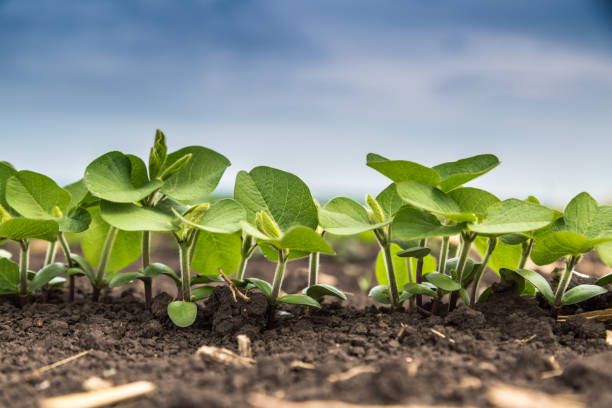How Do You Get Beeswax From Bees?
Beeswax is a natural wax produced by honey bees to build the walls of their honeycomb. It is secreted from eight wax-producing glands on a worker bee’s abdomen and composed primarily of esters of fatty acids and various long-chain alcohols. Beeswax has a wide range of applications and uses throughout history.
For bees, beeswax serves as the structural foundation for honeycomb. The wax walls provide storage for honey and pollen while also housing larva during development. The hexagonal structure allows bees to efficiently store resources and maximize space [1].
For humans, beeswax has served purposes from candlemaking to cosmetics to art mediums. It is edible, hydrophobic, malleable when warm, and burns cleanly with a bright flame. Major markets for beeswax today include pharmaceuticals, cosmetics, candles, polishes, textile treating, and chewing gum [2].
Global production of beeswax is an important industry, valued in the hundreds of millions of dollars annually. Sustainable harvesting is necessary as beeswax is a finite resource dependent on healthy bee populations [3]. When properly harvested, beeswax can be a renewable and ecologically-friendly product.
Bees that Produce Beeswax
Beeswax is produced by honey bees. There are different species of honey bees, but the most common ones used in beekeeping are the Western honey bee (Apis mellifera) and the Eastern honey bee (Apis cerana). These social bees live together in hives and produce beeswax to build the honeycomb structures where they raise their brood and store honey.
Worker bees are the ones that produce beeswax. They have special wax-producing glands on their abdomens. To produce wax, the worker bees consume a lot of honey. It takes around 8 lbs of honey for bees to produce 1 lb of beeswax. The bees metabolize the honey and use it as a fuel source to produce beeswax from their wax glands.
The amount of beeswax produced depends on the size and health of the bee colony. A strong hive with 40,000-50,000 bees may produce 5-10 lbs of excess beeswax in a good season. Weaker hives will produce less. Beekeepers need to make sure not to harvest too much wax so the bees can build proper comb and store enough honey.
How Bees Make Beeswax
Bees produce beeswax in their abdominal glands as part of the process of making honeycomb. It is made from honey, as bees consume honey to produce wax for building the honeycomb structure (https://beebeewraps.com/blogs/news/how-do-bees-make-beeswax).
To make beeswax, worker bees eat honey, digest it, and use the sugars to produce wax in their wax glands. The wax is initially transparent and colorless when secreted. To build the honeycomb, bees chew the secreted wax, mixing it with saliva and other secretions to make it pliable. The wax is then used to build the familiar hexagonal honeycomb cells (https://beeswaxco.com/bees-making-wax/).
Bees produce the wax to build honeycombs, which are used to store honey and pollen. The honeycomb provides storage for food reserves and a structure for the colony to live in and raise young bees. The wax is secreted in the form of small flakes from special glands on the worker bees’ abdomens.
Collecting Raw Beeswax
Beeswax needs to be collected directly from bee colonies in order to obtain raw beeswax. There are a few common methods used by beekeepers to collect wax from hives:

One method is to use a solar wax melter that is placed on top of the hive boxes. The heat from the sun melts the wax, which drips down into a collection tray (wikihow.com). This allows beekeepers to extract wax without opening up the hive.
Another technique is to scrape wax and propolis buildup off of honeycomb frames after the honey has been harvested. The wax scrapings can then be melted down to form raw beeswax blocks (beesfordevelopment.org). This method ensures none of the wax goes to waste.
Beekeepers may also use a heated knife to slice off wax capping from honeycomb frames before extracting honey. The wax cappings can be collected and later rendered into raw beeswax.
Finally, some beekeepers will melt down older brood comb frames that are no longer suitable for the hive in order to salvage the wax. This rendered wax can be filtered to remove impurities.
Once collected, raw beeswax needs to be processed further in order to clean it and remove impurities. This involves a melting and filtering process described in the next section.
Processing Raw Beeswax
After collecting raw beeswax, the next step is to process it into a clean, usable form. Raw beeswax contains impurities like honey, propolis, and bits of wax comb that need to be filtered out.1
To process raw beeswax, start by scraping off any remaining honey or propolis.2 Then melt the wax and water in a double boiler, keeping the temperature around 145°F to avoid scorching the wax. Once melted, pour the wax through a filter like cheesecloth or a fine mesh strainer to remove debris and impurities. Allow the wax to cool and harden before remelting and filtering again for maximum purity.
Some alternatives to straining include allowing the wax to drip slowly through a colander or using a wax press to force impurities out. Processing beeswax two or three times ensures all impurities are filtered out, resulting in clean, high-quality beeswax ready for projects. Properly rendering and cleaning beeswax takes time but is essential for removing unwanted particles.
Storing and Preserving Beeswax
Properly storing beeswax is important for maintaining its quality and preventing degradation over time. According to Bee’s Wrap, beeswax should be kept in a cool, dry place away from direct sunlight. Excessive heat and humidity can cause beeswax to become sticky or lose its shape. Likewise, direct sunlight can bleach out the color of beeswax over time https://www.beeswrap.com/.
When storing beeswax products like reusable food wraps, it’s recommended to roll or fold them neatly to help maintain their shape according to Medium. This prevents creasing or deforming of the wrap’s beeswax coating https://medium.com/@Real-Eco-Friendly/beeswax-wraps-a-sustainable-solution-for-food-storage-and-preservation-8a5168143121.
For raw beeswax blocks, slabs, or comb, air tight glass or plastic containers are ideal for storage. Like with finished products, raw beeswax should be kept out of direct light and extreme temperatures. Properly stored, raw beeswax can remain usable for many years.
Uses of Beeswax
Beeswax has a wide variety of uses and applications thanks to its unique properties. It is pliable, waterproof, and has a lovely honey scent. Some of the most common uses for beeswax include:
Candle making – Beeswax is the perfect base for making candles. It burns cleanly and emits a bright flame. Candles made from beeswax are often preferred for their natural scent and ambiance.
Cosmetics – Beeswax is used to make natural cosmetics like lip balms, skin creams, and lotions. It acts as an emulsifier and thickening agent in these products. Beeswax also helps lock in moisture and has anti-inflammatory properties that benefit skin [1].
Furniture polish – A mixture of beeswax and lemon oil or turpentine makes an excellent polish for wood furniture and surfaces. The beeswax helps form a protective coating and buffs the wood to a lustrous shine.
Leather conditioner – Rubbing beeswax into leather goods like shoes, belts, and saddles helps soften the material and prevent cracking. It also provides water resistance.
Lubrication – Beeswax can be used to lubricate small mechanisms like zippers, scissors, and clock gears. It reduces friction between moving parts.
Wax wraps – Thin sheets of cotton or linen can be coated in beeswax to create reusable food wraps. The wax coating provides a barrier that keeps food fresh.
Textile waterproofing – Coating natural fabrics like cotton and wool with melted beeswax makes them water resistant while still allowing them to breathe. This helps prolong the life of textiles.
Beeswax in Commercial Production
On a commercial scale, beeswax is harvested in large quantities to meet industrial demands. There are specialized methods and equipment used by commercial beekeepers and processors to maximize wax production efficiently.
Commercial wax production typically involves obtaining wax from beekeepers who maintain hundreds or thousands of hives. The beekeepers harvest raw beeswax from the hives on a regular basis and store it until there is a sufficient quantity to send to a wax processing facility.
To extract wax on a large scale, most facilities use a wax melter which consists of a heated tank that can hold many pounds of wax at once. The raw wax is dumped into the melter which gently heats and liquefies the wax so it can be strained and filtered [1].
After filtering, the melted wax may be poured into commercial wax molds to form uniform blocks, or directly into containers for shipping. Steam wax extractors are another common industrial method, using steam heat to efficiently recover maximum wax [2].
For large operations, automation allows faster wax rendering, molding, and packaging compared to small-scale methods. Quality control is also critical when producing wax for commercial markets.
The economics of commercial beeswax depend on having enough hive volume to justify investments in specialized equipment. But the rewards can be significant, as bulk beeswax sells for a premium over small batches.
Beeswax Sustainability
Ensuring ethical, sustainable wax harvesting practices is an important consideration for beekeepers and consumers alike. Beeswax is a natural product made by honey bees, so it’s critical that the bees are treated humanely and their hives left healthy and intact through the harvesting process. Some key principles for sustainable beeswax production include:
Minimizing disruption to the hive when collecting wax. Beekeepers only harvest a small portion of the wax at a time, taking frames or comb that the bees have already filled with honey and left behind. This allows the colony to continue building new wax in a natural way [1].
Avoiding chemicals that could contaminate the wax. Many beekeepers use organic practices to ensure chemicals like miticides or antibiotics don’t end up in the harvested wax [2].
Supporting bee health and population growth. Keepers often leave excess honey stores for the bees to overwinter, supplement feed when needed, and implement practices to control parasites and disease. Healthy hives can continue to produce wax sustainably.
Seeking certification. Some beekeepers get their operations certified through programs like EcoCert and the B Corporation. These verify sustainable, ethical practices in beekeeping and beeswax harvesting [3].
When sourcing beeswax, consumers can look for products made with certified sustainable beeswax. This ensures the harvesting practices support bee welfare and responsible beekeeping.
Conclusion
Beeswax production is a fascinating natural process. Honey bees consume honey and secrete beeswax from wax-producing glands on their abdomens. They use this wax to build the honeycombs that store honey and house developing brood in their hives. Beekeepers periodically harvest some of this wax by melting down the honeycomb. The wax must be cleaned and filtered to remove impurities before it can be used for applications like candle-making, cosmetics, and food production. This renewable wax resource provides key benefits over petroleum-based waxes, since it does not deplete finite fossil fuel reserves. Protecting honey bee populations is crucial for sustaining beeswax supplies. When produced ethically, beeswax is a high-quality, natural wax with many uses that also supports pollinators.
Beeswax has served humans for millennia, from lighting our homes with candles to sealing and preserving our food. This remarkable substance exemplifies the wonder of the natural world and our interdependence with honey bees. By better understanding beeswax production, we can gain deeper appreciation for bees and more consciously utilize the fruits of their labor.



